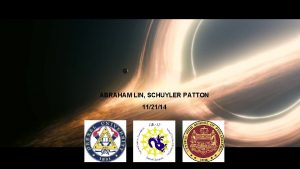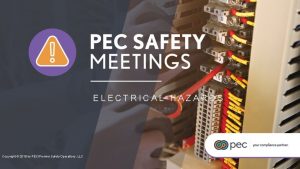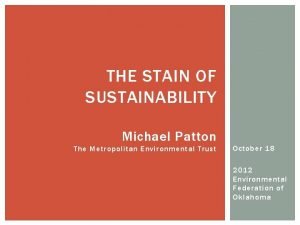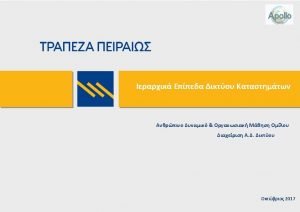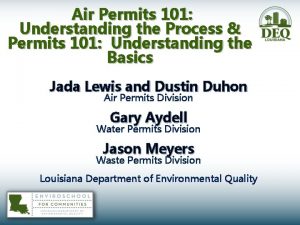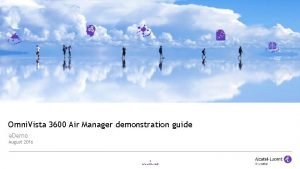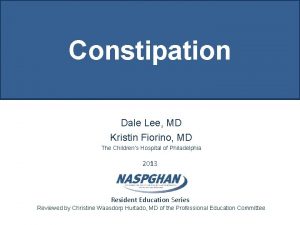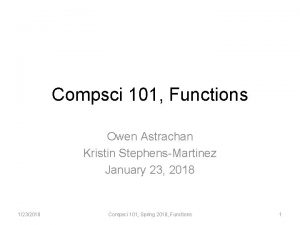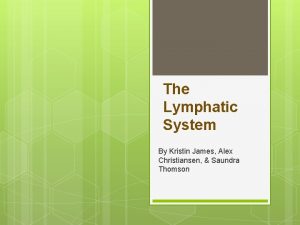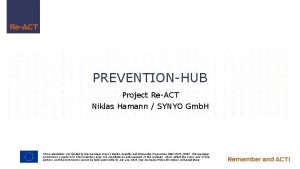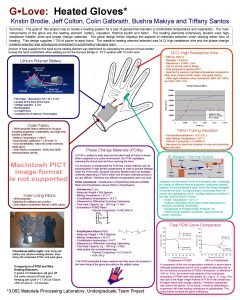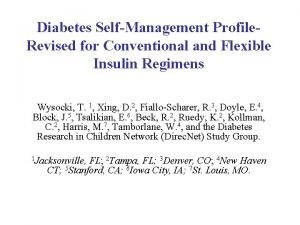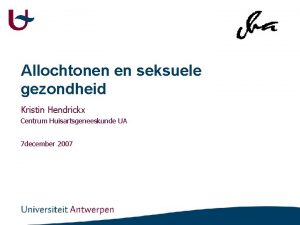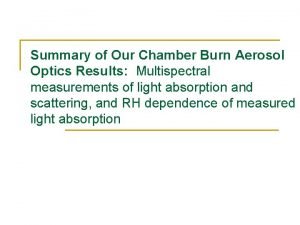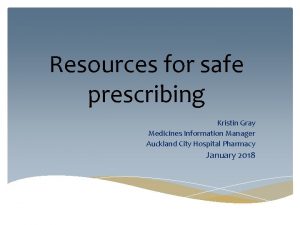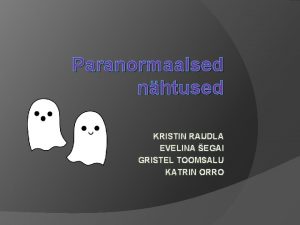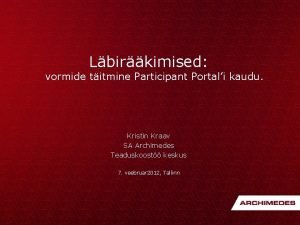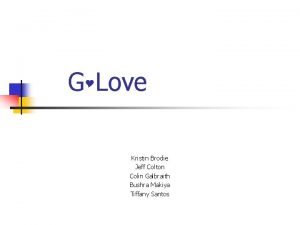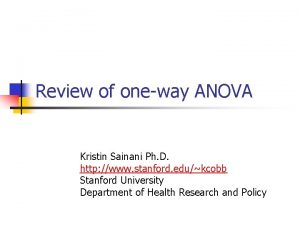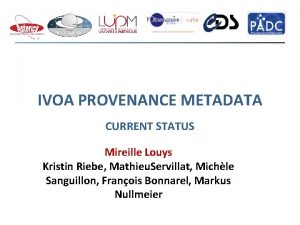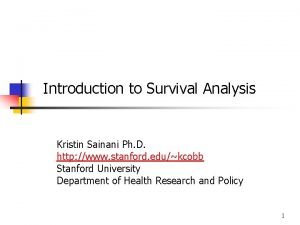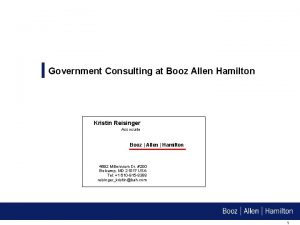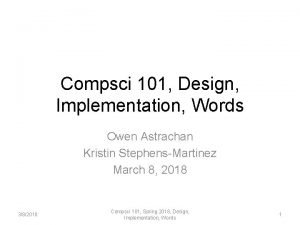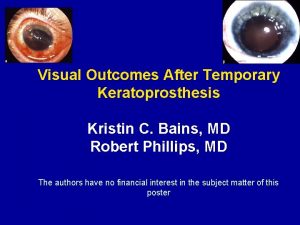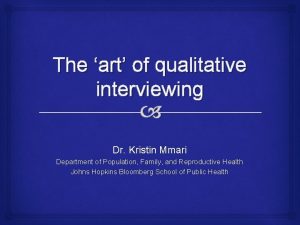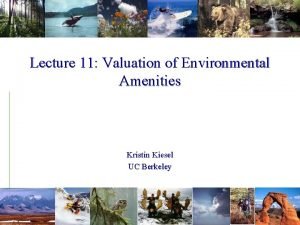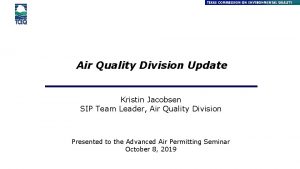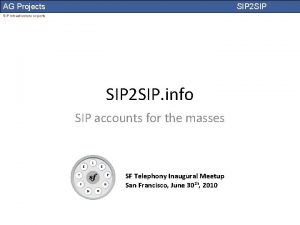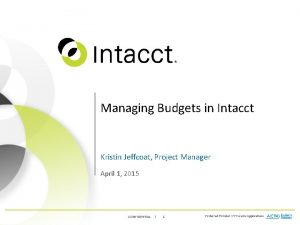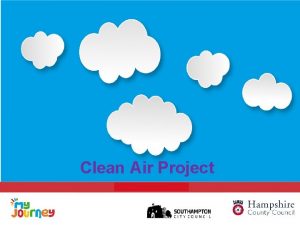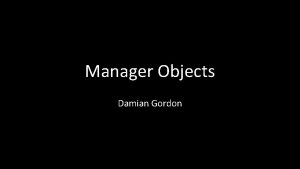SIP 101 Kristin Patton SIP Project Manager Air






















































- Slides: 54

SIP 101 Kristin Patton SIP Project Manager, Air Quality Division Presented to Environmental Trade Fair and Conference May 3, 2016

Agenda • What is a SIP? • What are the NAAQS? • What are the types of SIP revisions? • How are SIP revisions developed? Air Quality Division • SIP 101 • KJP • May 3, 2016 • Page 2

What is a SIP? Air Quality Division • SIP 101 • KJP • May 3, 2016 • Page 3

State Implementation Plan (SIP) • A plan to reduce pollution to meet federal air quality standards that: – in most cases, applies to areas not meeting federal air quality standards (nonattainment areas); – establishes control strategies and target dates for reducing emissions; – describes how the state will monitor air quality and determine compliance with the standards; and – includes technical and regulatory processes for demonstrating attainment. • The SIP is: – developed and submitted by the state; and – federally enforceable Air Quality Division • SIP 101 • KJP • May 3, 2016 • Page 4

Pretest Question #1 There is only one SIP for each state. True or False? TRUE SIP revisions are completed as necessary to update the SIP. Air Quality Division • SIP 101 • KJP • May 3, 2016 • Page 5

SIP Revisions • Revised as needed – when new laws or rules are enacted – when a region fails to attain standards or its attainment status changes – when new data or techniques become available • Developed with participation from stakeholders – meetings, comment periods, and public hearings Air Quality Division • SIP 101 • KJP • May 3, 2016 • Page 6

The Texas SIP • Section I: Introduction • Section II: Regional Classification • Section III: Public Participation/Intergovernmental Coordination • Section IV: Preliminary Review • Section V: Legal Authority • Section VI: Control Strategy • Section VII: Compliance Schedule • Section VIII: Texas Air Pollution Emergency Episode Contingency Plan • Section IX: Air Quality Surveillance Plan • Section X: Review of New Sources and Modifications • Section XI: Source Surveillance • Section XII: Resources • Section XIII: Intergovernmental Cooperation • Section XIV: TCEQ Adopted Rules and Regulations Air Quality Division • SIP 101 • KJP • May 3, 2016 • Page 7

Components of a SIP Air Quality Division • SIP 101 • KJP • May 3, 2016 • Page 8

What are the NAAQS? Air Quality Division • SIP 101 • KJP • May 3, 2016 • Page 9

National Ambient Air Quality Standards (NAAQS) • Required by the Federal Clean Air Act (FCAA) • Set by the United States Environmental Protection Agency (EPA) • Primary health-based standards and secondary welfare standards set for six criteria air pollutants Air Quality Division • SIP 101 • KJP • May 3, 2016 • Page 10

NAAQS Criteria Air Pollutants • Standards set for six criteria air pollutants: – Ground-Level Ozone (O 3) – Particulate Matter (PM) – Nitrogen Dioxide (NO 2) – Sulfur Dioxide (SO 2) – Carbon Monoxide (CO) – Lead (Pb) Air Quality Division • SIP 101 • KJP • May 3, 2016 • Page 11

Current Primary NAAQS Pollutant Ozone (O 3) * Particulate Matter (PM 2. 5) Particulate Matter (PM 10) Nitrogen Dioxide (NO 2) Sulfur Dioxide (SO 2) Carbon Monoxide (CO) Lead (Pb) Level Averaging Time 0. 070 ppm (2015) Eight-Hour 0. 075 ppm (2008) Eight-Hour 12. 0 µg/m 3 Annual (Arithmetic Mean) 35 µg/m 3 Twenty-Four-Hour 150 µg/m 3 Twenty-Four-Hour 53 ppb Annual (Arithmetic Mean) 100 ppb One-Hour 75 ppb One-Hour 9 ppm Eight-Hour 35 ppm One-Hour 0. 15 µg/m 3 Rolling Three-Month Average Note: Secondary NAAQS are the same as the primary NAAQS for all pollutants EXCEPT SO 2, which has a secondary NAAQS of 0. 5 ppm over three hours, and PM 2. 5, which has a secondary NAAQS of 15. 0 µg/m 3 annually. More information can be found at EPA’s NAAQS webpage (http: //epa. gov/air/criteria. html) * In 1997 EPA revoked the 1 -hour ozone standard (0. 12 ppm, not to be exceeded more than once per year) and in 2015 the EPA revoked the 1997 eight-hour ozone standard (0. 08 ppm); however, some areas have continued obligations under those standards (“anti-backsliding”). Air Quality Division • SIP 101 • KJP • May 3, 2016 • Page 12

Pretest Question #2 The Federal Clean Air Act requires the EPA to revise the NAAQS every five years. TRUE or FALSE? FALSE The EPA is required to review the NAAQS every five years which may or may not result in a NAAQS revision. Air Quality Division • SIP 101 • KJP • May 3, 2016 • Page 13

What are the types of SIP revisions? Air Quality Division • SIP 101 • KJP • May 3, 2016 • Page 14

EPA Revises NAAQS Infrastructure and Transport SIP Revision State Designation Recommendations EPA Nonattainment Designation Emissions Inventory, RFP, and Attainment Demonstration SIP Revisions Redesignation Request and Maintenance Plan SIP Revision EPA Action State Action Redesignation to Attainment Air Quality Division • SIP 101 • KJP • May 3, 2016 • Page 15

Infrastructure and Transport SIP Revision • Describes how the state meets the requirements of FCAA, § 110(a) for a new or revised NAAQS – Infrastructure = Does Texas have the means and authority to implement the SIP? § § ambient air quality monitoring and data systems programs for enforcement of control measures – Transport = Does Texas significantly contribute to nonattainment or interfere with maintenance in another state? Air Quality Division • SIP 101 • KJP • May 3, 2016 • Page 16

Pretest Question #3 For a new or revised NAAQS, the Federal Clean Air Act requires Infrastructure and Transport SIP revision submittals from: a. states with nonattainment areas for that NAAQS b. all states c. states bordering Canada or Mexico d. states that failed to submit an Infrastructure and Transport SIP revision for the previous NAAQS B. All states Air Quality Division • SIP 101 • KJP • May 3, 2016 • Page 17

Infrastructure and Transport SIP Revision • Required for all NAAQS • Statewide plan • Requirement is not tied to nonattainment area designations • Due 3 years after the promulgation date of a new or revised NAAQS Air Quality Division • SIP 101 • KJP • May 3, 2016 • Page 18

Nonattainmen t Area Designations Air Quality Division • SIP 101 • KJP • May 3, 2016 • Page 19

Pretest Question #4 A nonattainment area is: a. an area designated by the EPA as not meeting federal air quality standards b. an area for which the state has failed to submit a SIP revision c. an area designated by the state as not meeting federal air quality standards d. a and c A Nonattainment areas are designated by the EPA Air Quality Division • SIP 101 • KJP • May 3, 2016 • Page 20

EPA Revises NAAQS Infrastructure and Transport SIP Revision State Designation Recommendations EPA Nonattainment Designation Emissions Inventory, RFP, and Attainment Demonstration SIP Revisions Redesignation Request and Maintenance Plan SIP Revision EPA Action State Action Redesignation to Attainment Air Quality Division • SIP 101 • KJP • May 3, 2016 • Page 21

Designations Process • EPA sets a new or revised NAAQS • States submit designation recommendations – Attainment: the area meets the NAAQS – Nonattainment: the area does not meet the NAAQS – Unclassifiable: the area cannot be classified based on available information • EPA makes final designations – 120 -day notice to states if designations differ from recommendations Air Quality Division • SIP 101 • KJP • May 3, 2016 • Page 22

Pretest Question #5 Nonattainment area designations are made: a. immediately upon NAAQS revision b. on the effective date of the NAAQS revision c. one year following the NAAQS revision d. two to three years following the NAAQS revision D. Two to three years State recommendations are due one year following a NAAQS revision. The EPA is required to finalize designations one year later, although this may be extended by an additional year. Air Quality Division • SIP 101 • KJP • May 3, 2016 • Page 23

Pretest Question #6 If an attainment area monitors pollutant levels that exceed the NAAQS after initial designations are final, the area is designated nonattainment by operation of law. True or False? FALSE Nonattainment area designations must be made through the formal designations process. Air Quality Division • SIP 101 • KJP • May 3, 2016 • Page 24

Texas NAAQS Nonattainment Areas • Ozone – 2008 Standard – 0. 075 ppm § Houston-Galveston-Brazoria § Dallas-Fort Worth • Particulate Matter – El Paso for PM 10 • Lead – A portion of Collin County in the Dallas-Fort Worth Area • Nitrogen Dioxide – All areas attainment • Sulfur Dioxide – No areas designated • Carbon Monoxide – All areas attainment Air Quality Division • SIP 101 • KJP • May 3, 2016 • Page 25

Nonattainmen t Area SIP Revisions Air Quality Division • SIP 101 • KJP • May 3, 2016 • Page 26

SIP Requirements for Ozone Nonattainment Areas MARGINAL MODERATE SERIOUS SEVERE EXTREME (3 Years) (6 Years) (9 Years) (15 -17 Years) (20 Years) VMT Growth Offset Clean Fuels and Controls for Boilers Emissions Inventory Basic I/M Emissions Statements RACT & RACM Emissions Controls Nonattainment NSR Program & Emissions Offsets Attainment Demonstration RACT Fixups I/M Corrections Conformity Contingency Measures RFP - 15% VOC Reductions within 6 years Enhanced Monitoring and I/M Modeled Attainment Demonstration 3% per Year VOC Reductions After 6 Years RFP Milestone Contingency Measures Major Source Fees for Failure to Attain (185 Fees) Clean Fuels Program VMT Demonstration Air Quality Division • SIP 101 • KJP • May 3, 2016 • Page 27 Traffic Controls During Congestion

EPA Revises NAAQS Infrastructure and Transport SIP Revision State Designation Recommendations EPA Nonattainment Designation Emissions Inventory, RFP, and Attainment Demonstration SIP Revisions Redesignation Request and Maintenance Plan SIP Revision EPA Action State Action Redesignation to Attainment Air Quality Division • SIP 101 • KJP • May 3, 2016 • Page 28

Emissions Inventory • Identifies: – Types of emissions sources present in an area § Stationary Point Sources § Area Sources § Non-Road Sources § On-Road Sources – Amount of each pollutant emitted – Types of process and control devices employed at each plant or source category • FCAA requires states to submit emissions inventory information for all relevant sources in nonattainment areas Air Quality Division • SIP 101 • KJP • May 3, 2016 • Page 29

Emissions Inventory SIP Revision • Required for all nonattainment areas, regardless of classification • Due two years after the effective date of a nonattainment designation • Provides current and comprehensive data on emissions contributing to nonattainment • Establishes a Base Year Inventory for the nonattainment area Air Quality Division • SIP 101 • KJP • May 3, 2016 • Page 30

Reasonable Further Progress SIP Revision • Describes how incremental emissions reductions requirements will be met in a nonattainment area • Demonstrates that emissions will be reduced by specified amounts between the base year and the nonattainment area’s attainment year • For ozone nonattainment areas: – Moderate or higher areas must submit plans providing for a 15% reduction in VOC emissions – Serious or higher areas must submit plans providing for additional 3% annual combined reductions of NOX and VOC averaged over three-year increments until the attainment deadline Air Quality Division • SIP 101 • KJP • May 3, 2016 • Page 31

Pretest Question #7 A reasonable further progress SIP revision demonstrates: a. how a nonattainment area will improve air quality and meet the NAAQS by the area’s attainment deadline b. how a nonattainment area will continue to meet the NAAQS once redesignated to attainment c. that emissions will be reduced by specified amounts between the base year and the nonattainment area’s attainment year d. a and c C Attainment of the NAAQS is addressed in an Attainment Demonstration SIP revision. Air Quality Division • SIP 101 • KJP • May 3, 2016 • Page 32

Attainment Demonstration SIP Revision • Describes in detail the strategies and emissions control measures that show a nonattainment area will improve air quality and meet the NAAQS by the attainment deadline • Components of an attainment demonstration include: – – Monitoring data Emissions inventory Photochemical modeling Control strategy Air Quality Division • SIP 101 • KJP • May 3, 2016 • Page 33

Pretest Question #8 A state is required to develop Attainment Demonstration SIP revisions for: a. the entire state b. all nonattainment areas in the state c. all attainment areas in the state d. some nonattainment areas in the state, depending on classification D For ozone nonattainment areas, states must submit Attainment Demonstration SIP revisions for nonattainment areas classified as moderate and above. Air Quality Division • SIP 101 • KJP • May 3, 2016 • Page 34

Components of an Attainment Demonstration: Monitoring Data • Monitoring Data is used to: – determine if an area is meeting the standard – analyze trends • Monitoring Data is also used to: – provide information on transport, meteorology, and emissions sources – develop estimates of emissions from nonindustrial, mobile, and biogenic sources. Air Quality Division • SIP 101 • KJP • May 3, 2016 • Page 35

Components of an Attainment Demonstration: Emissions Inventory • Provides data for a variety of air quality planning tasks: – Establishing baseline emission levels – Calculating emission reduction targets – Control strategy development (quantifies the inventory used to determine potential control strategies for the SIP revision) – Emission inputs into air quality simulation models Air Quality Division • SIP 101 • KJP • May 3, 2016 • Page 36

Components of an Attainment Demonstration: Modeling • Models are used to predict future pollutant levels for use in demonstrating attainment of standards by mandated attainment dates. • Models estimate the emissions reductions needed to attain the standard and use meteorology, emissions, and chemistry to simulate pollution events and to test control strategies and real-world results. Real World Situation Computer Grid Simulation Air Quality Division • SIP 101 • KJP • May 3, 2016 • Page 37

Components of an Attainment Demonstration: Control Strategy Development • Analysis is done to determine the type and need for emissions reductions to attain the NAAQS. • State, local, and federal strategies are considered. • Rules are adopted and incorporated into the SIP as needed. • Contingency measures are included in the plan to be implemented if the area fails to attain the standard by the attainment date. Air Quality Division • SIP 101 • KJP • May 3, 2016 • Page 38

Control Strategy Development: RACT and RACM • Federally required control measures • Reasonably Available Control Technology (RACT) – Lowest emissions limitation that a particular source is capable of meeting by the application of control technology that is reasonably available considering technological and economic feasibility • Reasonably Available Control Measures (RACM) – Helps advance attainment of the NAAQS – Considers technological and economic feasibility as well as enforceability and practicality Air Quality Division • SIP 101 • KJP • May 3, 2016 • Page 39

EPA Revises NAAQS Infrastructure and Transport SIP Revision State Designation Recommendations EPA Nonattainment Designation Emissions Inventory, RFP, and Attainment Demonstration SIP Revisions Redesignation Request and Maintenance Plan SIP Revision EPA Action State Action Redesignation to Attainment Air Quality Division • SIP 101 • KJP • May 3, 2016 • Page 40

Determination of Attainment • Also known as a Clean Data Determination • The nonattainment area is meeting the NAAQS based on certified monitoring data • Initiated by a state request or by the EPA • Final determination from EPA will suspend planning requirements for so long as the area continues to attain the NAAQS Air Quality Division • SIP 101 • KJP • May 3, 2016 • Page 41

Pretest Question #9 A nonattainment area is redesignated to attainment when the EPA finalizes a Determination of Attainment for the area. True or False? FALSE A determination of attainment (or clean data determination) is not a redesignation and does not change an area’s attainment status. It does suspend planning requirements but not antibacksliding requirements. Air Quality Division • SIP 101 • KJP • May 3, 2016 • Page 42

Anti-Backsliding Requirements • Anti-Backsliding requirements are intended to ensure that air quality in nonattainment areas does not get worse after a standard is revoked. • Examples include: New Source Review permitting, contingency measures, Failure to Attain fees. • Areas still designated nonattainment for a revoked standard remain subject to applicable anti-backsliding requirements. • Anti-backsliding obligations are removed through redesignation. Air Quality Division • SIP 101 • KJP • May 3, 2016 • Page 43

Redesignation Requirements • The EPA may redesignate an area to attainment if all of the following conditions are met: – the NAAQS have been attained (clean data); – the state has met all applicable requirements for the area under the FCAA, § 110 and Part D; – the applicable SIP revision has been fully approved by the EPA under the FCAA, § 110(k); – the improvement in air quality is due to permanent and enforceable reductions in emissions; and – the EPA has fully approved a maintenance plan for the area under FCAA, § 175 A. Air Quality Division • SIP 101 • KJP • May 3, 2016 • Page 44

Redesignation Request and Maintenance Plan SIP Revision • The Redesignation Request describes how a nonattainment area meets redesignation requirements and how the area will continue to meet the NAAQS once redesignated to attainment. • The Maintenance Plan should contain: – – – attainment inventory; maintenance demonstration; verification of continued attainment; monitoring network; and contingency plan. • Two 10 -year maintenance plans are required. Air Quality Division • SIP 101 • KJP • May 3, 2016 • Page 45

Pretest Question #10 The EPA will not redesignate a nonattainment area to attainment for a revoked NAAQS. True or False? TRUE The EPA recently established a “redesignation substitute” option for revoked standards. Air Quality Division • SIP 101 • KJP • May 3, 2016 • Page 46

Redesignation Substitute for Revoked Standards • EPA’s Ozone Standard SIP Requirements Rule provides the redesignation substitute to remove anti-backsliding measures for revoked ozone NAAQS – Includes substance of FCAA redesignation criteria • Redesignation Substitute elements – Monitoring data showing attainment of the revoked NAAQS – Showing that attainment was due to permanent and enforceable emissions reductions – Demonstration that the area can maintain the standard for 10 years after approval Air Quality Division • SIP 101 • KJP • May 3, 2016 • Page 47

Other types of SIP revisions Air Quality Division • SIP 101 • KJP • May 3, 2016 • Page 48

Regional Haze SIP Revision • Describes how the state will meet visibility progress goals in Class I areas – Guadalupe and Big Bend National Parks in Texas • Establishes goals and strategies to reduce visibility-impacting pollutants to meet a national visibility goal by 2064 – In Texas, primarily NOX, SO 2, and PM • Comprehensive analysis due to the EPA every 10 years and progress reports due every five years through 2064 Air Quality Division • SIP 101 • KJP • May 3, 2016 • Page 49

Program or Rule Update SIP Revision • Updates to required programs or rules incorporated into the SIP control strategy • Requires a SIP revision • Examples include: – Vehicle Inspection and Maintenance (I/M) Program – Rules for Stationary Sources Air Quality Division • SIP 101 • KJP • May 3, 2016 • Page 50

How are SIP revisions developed? Air Quality Division • SIP 101 • KJP • May 3, 2016 • Page 51

SIP Development • Initial research phase – Data collected and modeled, control strategies proposed and tested, and the revision drafted – Typically requires 1 -4 years • TCEQ's formal rulemaking process – Publication of the proposal, public meetings, hearings, review of public comments, and adoption by TCEQ's commissioners – Takes about six months – Legally binding and enforceable under state law once SIP revision adopted by the commission • Submitted to the EPA for review and approval – Federally enforceable after it has been approved by the EPA Air Quality Division • SIP 101 • KJP • May 3, 2016 • Page 52

Consequences of Failing to Develop an Approvable SIP • Failure to submit or implement a SIP or submission of a SIP that is unacceptable to the EPA can result in: – start of a federal implementation plan (FIP) clock; – SIP call; or – EPA sanctions or other penalties on the state. § Sanctions can include cutting off federal highway funds and setting more stringent pollution offsets for certain emitters. Air Quality Division • SIP 101 • KJP • May 3, 2016 • Page 53

Contact Information • Kristin Patton – SIP Team, Air Quality Planning Section – (512) 239 -4907 – kristin. patton@tceq. texas. gov • Contact the SIP Team or join our e-mail list – http: //www. tceq. texas. gov/airquality/sipcontact. html Questions? Air Quality Division • SIP 101 • KJP • May 3, 2016 • Page 54
 Hubungan air tanah dan tanaman
Hubungan air tanah dan tanaman Process indicators enable a software project manager to
Process indicators enable a software project manager to Direcin
Direcin Kamela patton
Kamela patton Roll off dumpster patton
Roll off dumpster patton Jade patton
Jade patton Jeff patton mona lisa
Jeff patton mona lisa Schuyler patton
Schuyler patton Kamela patton salary
Kamela patton salary What does papa write to arun about mrs. patton?
What does papa write to arun about mrs. patton? Pec premier safety
Pec premier safety Jade patton
Jade patton Product management 101
Product management 101 Senior manager vs general manager
Senior manager vs general manager Portfolio manager synergy manager parental developer
Portfolio manager synergy manager parental developer Understanding air permits
Understanding air permits Air manager demo
Air manager demo Cfp lead generation
Cfp lead generation Kristin kersten
Kristin kersten Paradoxical contraction
Paradoxical contraction Kristin stephens-martinez
Kristin stephens-martinez Python tutor ames
Python tutor ames Kristin spent $131 on shirts
Kristin spent $131 on shirts Interesting facts about the lymphatic system
Interesting facts about the lymphatic system Nicklas hamann
Nicklas hamann Precarioius
Precarioius Christine kizuka
Christine kizuka Kristin brodie
Kristin brodie Dsmp kristin
Dsmp kristin Kristin hendrickx
Kristin hendrickx Performance task background
Performance task background Kristin lewis unr
Kristin lewis unr Adhb hippo
Adhb hippo Gristel aste
Gristel aste Kristin kraav
Kristin kraav Kristin bentz
Kristin bentz Kristin gaines wikipedia
Kristin gaines wikipedia Vahram chuguryan wikipedia
Vahram chuguryan wikipedia Kristin brodie
Kristin brodie Kristin lamoureux
Kristin lamoureux Kristin sainani
Kristin sainani Kristin raudsepp
Kristin raudsepp Kristin riebe
Kristin riebe What shape is this
What shape is this Betsy atkinson
Betsy atkinson Kristin raudsepp
Kristin raudsepp Booz allen government consulting
Booz allen government consulting Kristin v stephens-martinez
Kristin v stephens-martinez Kristin v stephens-martinez
Kristin v stephens-martinez Kristin gill
Kristin gill Julia maccini
Julia maccini Kristin bains
Kristin bains Kristin mmari
Kristin mmari Astrid erik
Astrid erik Kristin kiesel
Kristin kiesel







